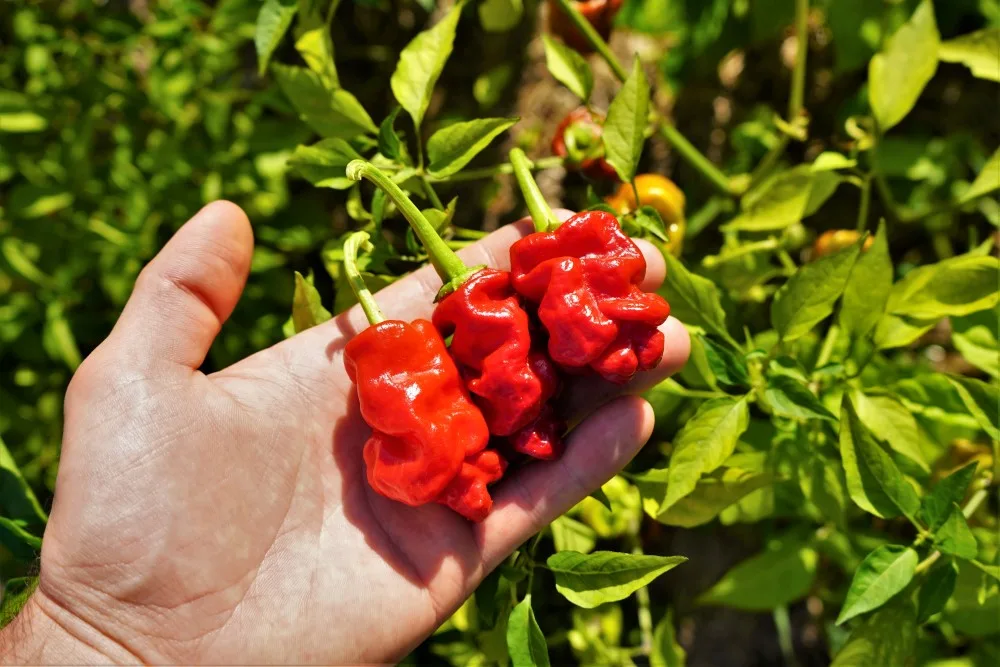One of the most strange and silly pepper varieties is the peter pepper. Known for its…recognizable shape, the peter pepper is sure to start awkward conversations in the garden.
In this article, I’ll share all about the peter pepper. Where did it come from? Where can you get seeds? Hot spicy are the peppers? What can they be used for?
About The Peter Pepper
The most notable characteristic of the peter pepper is its suggestive appearance. It is hard to deny that the fruits from this plant look very similar to a certain anatomical feature of the male body…

As a result, many nicknames have been given to the peter pepper, including the “chilly willy.” While not all of the fruits will have the same shape, our plant was shockingly consistent.
Origin
So, where did this hilarious pepper come from? I’d love to tell you there is a crossbreeder out there with a great sense of humor. However, it seems the original source of the peter pepper variety is unknown, perhaps completely natural.
There are some other peppers that have a similar shape that are also naturally occurring, including the Zou-pi pepper and the 7 pot primo orange. The blossom end of peppers can grow in strange ways across many varieties.
Fruits
There are other varieties with similar looks, but none are quite as dramatic as the peter pepper. There are other colored variants of the peter pepper as well, including a yellow one.
The fruits are typically 3-4 inches long, with a crinkled bottom and a divot at the tip. While most will have this appearance, some of ours grew with a point at the end instead of a crease.

Seeds and Growing
If you want to get your hands on some peter peppers, you’ll have to grow them yourself. I have yet to see them for sale at the grocery store, and I doubt we ever will. Thankfully, they are super easy to grow from seed.
First, you’ll have to find some quality seeds. There are many specialty pepper seed sellers online that carry the variety, so do some browsing. Here are some suppliers:

Once you have your seeds, all that is left is to grow them like any other pepper plant. You’ll likely have to start your seeds indoors in the early spring (depending on where you live). Learn how to grow peppers here.
Plant characteristics:
Our peter pepper plant was squat and bushy, with very dense foliage and high productivity. It was also an early producer, with the first pods ripening about 60 days after transplanting.

Peter Pepper Scoville (Heat)
The peter pepper seems most similar in heat to a serrano-type pepper. Heat is quite high for a novice, but is certainly not among the hottest peppers available.
The peter pepper has a Scoville rating around 10,000-20,000 SHUs, placing it right around the serrano pepper for spiciness. If you like a medium heat level, the peter pepper may be a good substitute for cayenne pepper.
The pods have very thin walls that quickly begin drying on the plant after ripening. This means you should pick your peter peppers as soon as they turn red and begin processing or cooking them.
Peter Pepper Flavor and Uses
If you do end up growing the peter pepper, there are several culinary uses for the pods. They are very similar to cayenne peppers, with thin walls and a medium heat level.
I found the best use was to dehydrate and grind the peppers into a spicy powder. This makes a perfect substitute for cayenne powder, adding a nice kick of heat to any meal that needs it.

The very thin walls mean that the peter pepper is not great for pickling, but here are some other uses:
- Dehydrating – Definitely my top pick. Dry the peppers in a food dehydrator or the oven and grind into a fine powder.
- Fermenting – If you’re into fermentation, the peter pepper is a suitable candidate for a brine ferment. You can then use the ferment to make a tasty Louisiana-style hot sauce.
- Frying – Use your peter peppers in place of red chilies in stir fry dishes, soups & stews.
If you want to class down your garden while bringing a smile to the faces of your visitors, I recommend growing the peter pepper. They are silly and strange, and they can also be used for food. The perfect companion to a quirky garden.



